Contents
- 1 Exploring the World of Percussion Instruments for Music Lovers
- 1.1 Drums:
- 1.2 Cymbals:
- 1.3 Mallet Percussion Instruments:
- 1.4 Hand Percussion Instruments:
- 1.5 Other Percussion Instruments:
- 1.6 Percussion Instruments Accessories:
- 1.7 Conclusion to Percussion Instruments
- 1.8 Why Custom Electronic Drum Kits Are the Future of Drumming
- 1.9 You Can’t Have Good Music without Percussion Instruments
- 1.10 What Drum Heads to use on your Drums
Exploring the World of Percussion Instruments for Music Lovers
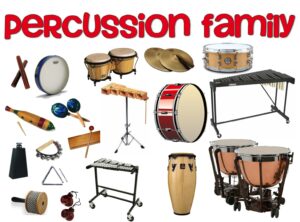 Welcome to “Percussion instruments,” where we dive deep into the vibrant world of drum percussion instruments that must be explored. From the hypnotic echo of the djembe to the sharp crack of a snare drum, percussion brings life to musical compositions, inspiring seasoned musicians and enthusiastic beginners alike. Every rhythm lover knows that music is more than just melody; it’s about feeling the pulse that drives each note.
Welcome to “Percussion instruments,” where we dive deep into the vibrant world of drum percussion instruments that must be explored. From the hypnotic echo of the djembe to the sharp crack of a snare drum, percussion brings life to musical compositions, inspiring seasoned musicians and enthusiastic beginners alike. Every rhythm lover knows that music is more than just melody; it’s about feeling the pulse that drives each note.
This article invites you to discover various instruments that cater to every music lover’s sensibility, bridging cultures and traditions with every strike. Whether you’re considering picking up a pair of maracas or mastering the art of the cajón, join us as we uncover the breath, energy, and passion that percussion instruments infuse into the world of music. Get ready to tap into your inner rhythm and unleash your creative spirit!
Drums:

Snare Drum – The snare drum is a versatile and essential percussion instrument known for its sharp, crisp sound and distinctive “snap.” It features a set of metal wires—called snares—stretched across the bottom drumhead, which vibrate against the surface when struck, creating its signature sound. Commonly used in a wide range of musical genres from rock, pop, and jazz to orchestral and marching band music, the snare drum plays a central role in maintaining rhythm and adding dynamic accents. Whether it’s part of a full drum kit or played solo in a marching ensemble, the snare drum offers a bright, punchy tone that cuts through any mix. Its responsive feel and expressive potential make it a favourite among drummers of all skill levels.
Bass Drum – The bass drum is the largest and deepest-sounding drum in the percussion family, known for its powerful, low-end thump that provides the foundation of rhythm in many musical styles. In a drum kit, it’s typically played with a foot pedal and delivers the driving beat behind rock, pop, jazz, and more. In orchestral and marching band settings, the bass drum is often played with mallets to create booming, dramatic effects that add weight and intensity to a performance. Its deep, resonant tone makes it essential for keeping time and reinforcing the groove. Whether on stage, in the studio, or on the marching field, the bass drum is the heartbeat of any percussion setup.
Tom-Toms – Tom-toms, or simply toms, are cylindrical drums without snares that produce deep, resonant tones and are a key part of most drum kits. They come in various sizes, with smaller toms offering higher-pitched sounds and larger ones delivering lower, booming tones. Typically mounted above the bass drum (rack toms) or standing on the floor (floor toms), they are often used for fills, rolls, and dynamic transitions in music. Toms are versatile and feature prominently across genres like rock, jazz, funk, and fusion, allowing drummers to add texture, movement, and expression to their playing. Their rich, rounded sound complements the snare and bass drum, making them essential for a full, balanced drum kit.
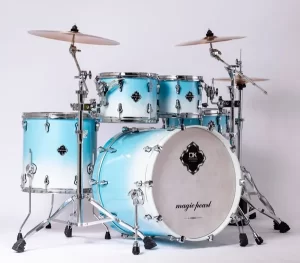
Drum set – A drum set, also known as a drum kit, is a collection of percussion instruments arranged for a single drummer to play. It typically includes a bass drum, snare drum, one or more tom-toms, hi-hats, and cymbals such as crash and ride. Designed for versatility, the drum set is used across nearly every musical genre—from rock and pop to jazz, blues, funk, and beyond. With sticks, brushes, or mallets in hand (and feet on the pedals), drummers use the kit to lay down grooves, drive rhythms, and add dynamic energy to a performance. Drum kits can range from compact setups for beginners to extensive configurations for professionals, often customised to suit a player’s style. Whether on stage or in the studio, the drum set remains the rhythmic backbone of modern music.
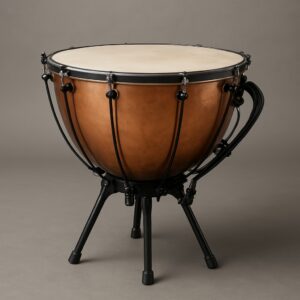
Timpani – The timpani, also known as kettledrums, are large, tunable percussion instruments commonly used in orchestras, concert bands, and classical ensembles. Unlike most drums, timpani produce definite pitches and can be tuned to specific notes using a foot pedal that adjusts the tension of the drumhead. Made with a large copper or fibreglass bowl and a stretched drumhead, timpani create a deep, resonant sound that can range from subtle rolls to thunderous booms. They are often played in sets of two to four drums, allowing for melodic as well as rhythmic contributions. Timpani are valued for their dramatic impact and ability to add depth, tension, and grandeur to musical compositions, making them a cornerstone of the classical percussion section.
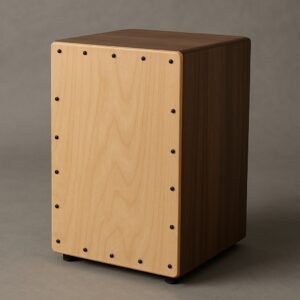
Cajón – The cajón is a percussion instrument originating from Peru, resembling a wooden box that is played by sitting on it and striking its front face with the hands. The instrument is typically made of wood, with a hollow body that creates a resonant sound. The cajón’s front panel, or “tapa,” is often thinner than the rest of the box and can be struck in different areas to produce a variety of tones, ranging from deep bass sounds when hit near the centre to sharp snare-like slaps when struck near the corners. Inside the cajón, metal snare wires or other materials can be added to create a buzzing effect, giving it a distinct snare drum quality. Popular in Afro-Peruvian music, the cajón has also gained widespread use in flamenco, Latin, and contemporary music due to its portability, versatility, and ability to produce rich, dynamic rhythms.
Cymbals:

Crash Cymbals – The crash cymbal is a key component of the drum kit and orchestral percussion section, known for its loud, explosive sound that adds emphasis and drama to musical performances. Typically used to accentuate transitions, mark climactic moments, or punctuate rhythm, the crash cymbal produces a sharp, shimmering crash when struck with a drumstick or clashed against another cymbal. In a drum kit, it’s usually mounted on a stand and played with sticks, while in orchestral settings, a pair of crash cymbals may be played by hand. Available in various sizes and thicknesses, crash cymbals can deliver a range of tones—from bright and quick to dark and sustained. Their powerful presence makes them an essential tool for adding energy and impact to a wide variety of musical genres.
Hi-Hat – The hi-hat is a vital part of the drum kit, consisting of two cymbals mounted on a stand and operated by a foot pedal. It can be played with sticks, the foot pedal, or a combination of both, offering a wide range of expressive sounds—from tight, crisp “chicks” when closed to shimmering, sizzle tones when open. Drummers often use the hi-hat to keep time, add rhythmic complexity, or create dynamic textures in everything from rock and pop to jazz, funk, and electronic music. Its versatility allows for subtle groove shaping as well as powerful rhythmic statements, making it a cornerstone of modern drumming. Whether played in a steady pattern or with syncopated flair, the hi-hat brings precision, nuance, and energy to the beat.
Ride Cymbal – The ride cymbal is a staple of the drum kit, prized for its clear, sustained tone and steady rhythmic role. Typically, larger and heavier than other cymbals, it produces a shimmering “ping” sound when struck with the tip of a drumstick and a washy, swelling sound when played on the edge. Drummers use the ride to maintain a consistent rhythm or “ride the beat,” especially in genres like jazz, rock, blues, and pop. It’s controlled, ringing tone contrasts with the explosive crash cymbal, offering subtlety and definition during grooves and solos. With variations in size, material, and finish, ride cymbals can range from bright and articulate to dark and complex, giving drummers a wide expressive palette.
Splash Cymbal – The splash cymbal is the smallest member of the cymbal family, known for its quick, bright, and cutting sound. Typically ranging from 6 to 12 inches in diameter, it produces a sharp, short burst of sound—ideal for accenting fills, creating dynamic contrast, or adding subtle colour to a drum pattern. Often used in genres like rock, pop, jazz, and fusion, splash cymbals are favoured for their ability to punctuate a performance without overwhelming the mix. Despite their size, they pack a surprising punch and are often mounted above or between other cymbals on a drum kit for quick, easy access. Their fast decay and crisp tone make splash cymbals a popular choice for drummers looking to add flair and finesse to their playing.
Mallet Percussion Instruments:

Marimba – The marimba is a wooden percussion instrument that produces a rich, warm sound, softer and darker than that of a xylophone. Originating from Africa, it has evolved through various cultures, notably in Central America, where it holds significant cultural importance. The modern marimba consists of wooden bars arranged chromatically, like a piano keyboard, with resonator pipes beneath each bar to amplify specific harmonics. Its deep, mellow tones blend well with other instruments, making it suitable for solo performances, ensembles, orchestras, and marching bands. The bars are typically made from rosewood or synthetic materials, and the instrument’s range can vary, commonly spanning 4.3 to 5 octaves. The marimba’s unique resonance and versatility continue to captivate musicians and audiences worldwide.
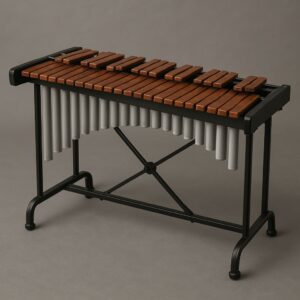
Xylophone – The xylophone is a percussion instrument composed of wooden bars struck by mallets, producing bright, sharp tones. Originating from Southeast Asia in the 9th century, it has evolved across various cultures, notably in Africa and Europe. In Western orchestral settings, the xylophone typically spans a range of 3 to 4 octaves and is played with hard mallets to produce its distinctive, dry timbre. The bars are often crafted from rosewood or synthetic materials, and the instrument may include resonators to enhance tonal richness. In educational contexts, xylophones serve as accessible tools for introducing children to musical concepts, aiding in the development of rhythm and melody recognition.

Vibraphone – The vibraphone is a melodic percussion instrument that combines tuned metal bars with resonator tubes and a motor-driven mechanism to produce a distinctive vibrato effect. Developed in the early 20th century, it has become a staple in jazz and contemporary music. Renowned vibraphonists like Roy Ayers have significantly shaped its expressive capabilities, blending jazz, funk, and soul influences to create a warm, resonant sound that continues to captivate audiences. The vibraphone’s unique tonal qualities and versatility make it a cherished instrument in both solo and ensemble settings.

Glockenspiel – The glockenspiel, meaning “play of bells” in German, is a percussion instrument consisting of tuned metal bars arranged in a keyboard layout. Played by striking the bars with mallets, often made of hard materials like metal or plastic, it produces a clear, bell-like tone that stands out in orchestral settings. Typically covering a range of two to three octaves, the glockenspiel is valued for its bright, high-pitched sound, which can carry melodies effectively within ensembles. Historically, the instrument evolved from early versions using small bronze bells to the modern setup of metal bars, gaining prominence in the 18th and 19th centuries. Beyond classical music, the glockenspiel has found its way into various genres, including popular music, where artists like Radiohead and The Beatles have incorporated its distinctive sound into their compositions.
Hand Percussion Instruments:
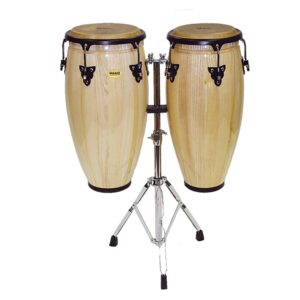
Congas – Congas are tall, narrow, single-headed drums of Afro-Cuban origin, traditionally played in sets of two or more. Often crafted from wood or fibreglass, they produce a rich, resonant tone that varies depending on where and how the drumhead is struck. Congas are central to many Latin music styles, such as salsa, rumba, and Afro-Cuban jazz, and are typically played with the hands rather than sticks. Each drum in a conga set has a different pitch—commonly referred to as the quinto (high), conga (medium), and tumba (low). Their rhythmic patterns, called “tumbaos,” are foundational to the groove of many Afro-Caribbean musical forms, making congas not just percussion instruments but vital storytellers of rhythm and culture.
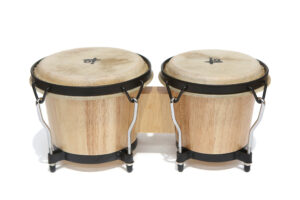
Bongos – Bongos are a pair of small, open-bottomed hand drums that are joined together and traditionally played while held between the knees. Originating from Cuba, bongos consist of a larger drum called the hembra (female) and a smaller one called the macho (male). They produce bright, sharp tones and are typically played with the fingertips and palms in rapid, intricate rhythms. Bongos are widely used in genres such as salsa, son Cubano, Latin jazz, and other Afro-Cuban music styles. Their portability and lively sound have also made them popular in a variety of other musical settings, from folk to pop. Despite their simple appearance, bongos are capable of a surprisingly wide range of expressive, dynamic rhythms.
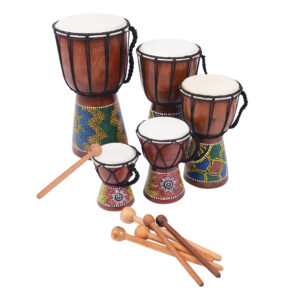
Djembe – The djembe is a traditional West African drum known for its wide tonal range and powerful, resonant sound. Carved from a single piece of hardwood and topped with a goat skin drumhead, the djembe is played with bare hands and can produce sharp slaps, rich tones, and deep bass notes. Originating with the Mandé people of Mali, it has long been used in ceremonies, storytelling, and community gatherings. The name “djembe” comes from a Bambara phrase that roughly means “everyone gather together in peace,” reflecting the drum’s role in uniting people through rhythm. Today, the djembe is played worldwide in drum circles, performances, and music education, celebrated for its energy, versatility, and cultural significance.
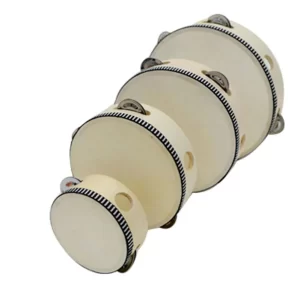
Tambourine – The tambourine is a versatile and lightweight percussion instrument consisting of a circular wooden or plastic frame, often fitted with pairs of small metal jingles called zills. Some tambourines also feature a drumhead stretched over one side, allowing for both rhythmic tapping and shaking. Widely used across many musical genres—from classical and folk to pop and rock—the tambourine adds bright, shimmering accents that enhance the overall texture of a performance. Its origins can be traced back to ancient civilisations in the Middle East, India, and Europe, where it was often used in religious and celebratory contexts. Today, the tambourine remains a staple in both traditional and modern music, loved for its lively sound and rhythmic sparkle.
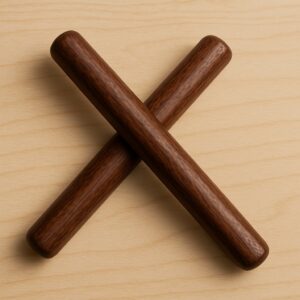
Claves – Claves are a pair of short, thick wooden sticks that produce a sharp, resonant clicking sound when struck together. Originating from Afro-Cuban music traditions, they are fundamental to many Latin music styles, especially in creating the clave rhythm—a repeating pattern that serves as the structural backbone for genres like salsa, son, and rumba. Typically made from hardwoods like rosewood or mahogany, one clave is held loosely in the hand to act as a resonating chamber, while the other is used to strike it. Despite their simplicity, claves play a crucial rhythmic role, helping musicians stay aligned with the pulse and feel of the music. Their crisp, penetrating tone allows them to cut through even dense arrangements, making them an essential tool for keeping time and driving the groove.
Other Percussion Instruments:
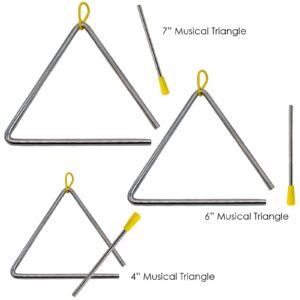
Triangle – The triangle is a simple, yet distinctive percussion instrument made from a thin steel rod bent into a triangular shape, with one corner left open. It produces a bright, clear, and ringing tone when struck with a metal beater, making it easily heard even in larger ensembles. Despite its unassuming appearance, the triangle plays an important role in both orchestral and folk music around the world, often used to add sparkle and rhythmic punctuation. Its sound can vary depending on where and how it’s struck, allowing for both subtle accents and more pronounced rhythmic patterns. Lightweight and easy to play, the triangle is a staple in percussion sections for its ability to cut through textures and add a touch of brilliance to any musical piece.
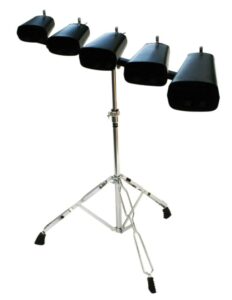
Cowbell – The cowbell is a metal percussion instrument with a distinctive, cutting tone that adds rhythmic drive and character to many musical styles. Originally used by herders to keep track of livestock, the cowbell was later adopted into music and has become a staple in genres like Latin, funk, rock, and Afro-Cuban music. Played with a stick or mounted on a drum kit, the cowbell produces a sharp, metallic “clank” that stands out in any mix. It often plays repeating rhythmic patterns that lock in with the groove, adding energy and forward momentum. Despite its simplicity, the cowbell’s unique sound and rhythmic function make it an essential and instantly recognisable element in a wide range of musical traditions.

Woodblock – The woodblock is a small, hollow percussion instrument traditionally made from a single piece of hardwood, producing a sharp, dry “clok” sound when struck with a stick or mallet. It is used in a wide range of musical styles—from orchestral and concert band settings to traditional Asian music and contemporary genres—for its clear, penetrating tone and rhythmic precision. The size and shape of the woodblock can vary, affecting its pitch and resonance, and some modern versions are made from synthetic materials for durability. Despite its simplicity, the woodblock plays an important rhythmic role, often used to mark time, accent phrases, or add texture to a piece. Its crisp sound makes it a valuable tool for percussionists seeking clarity and emphasis within an ensemble.

Castanets – Castanets are a traditional percussion instrument consisting of two small, concave wooden shells joined by a string and played by clicking them together with the fingers. Often associated with Spanish flamenco music and dance, castanets produce a sharp, clicking sound that adds rhythmic flair and expressive energy to a performance. They are typically played in pairs—one in each hand—with intricate finger movements that create rapid, percussive patterns. Castanets are also used in classical music and various folk traditions around the Mediterranean. While they may appear simple, mastering their technique requires precision, coordination, and rhythm, making them both a visual and auditory highlight in any musical or dance performance.
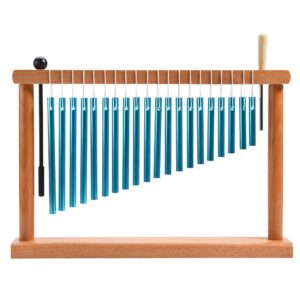
Chimes – Chimes, also known as bar chimes or wind chimes in certain contexts, are a set of metal or wooden tubes suspended in a row and played by brushing or striking them gently to produce a shimmering, ethereal sound. In orchestral and contemporary music, chimes are often made of metal and mounted on a frame, where they are struck with a hand or stick to create a cascading effect that adds atmosphere, emphasis, or dramatic flair. Commonly used in film scores, stage productions, and ambient music, their sound evokes a sense of magic, wonder, or transition. Chimes can vary in length and material, which affects their pitch and tone. Though subtle, they bring a distinctive sparkle to music, making them a favourite for adding colour and texture to a composition.
Percussion Instruments Accessories:
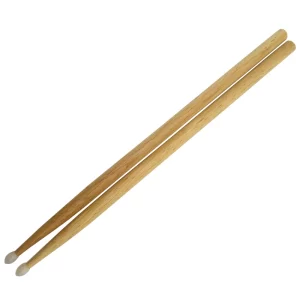
Drumsticks – Drumsticks are essential tools used by drummers to strike drums, cymbals, and other percussion instruments, creating sound and rhythm. Typically made of wood, such as hickory, maple, or oak, drumsticks come in a variety of sizes and shapes to suit different playing styles and musical genres. The tip of the drumstick, which can be rounded, pointed, or flared, affects the tone and attack of the instrument. Lighter sticks provide quicker response and are ideal for fast, intricate patterns, while heavier sticks offer more power for louder, more aggressive playing. Drumsticks are used in a wide range of musical settings, from rock and jazz to orchestral and marching band performances, and the choice of stick can greatly influence the dynamics and expressiveness of a drummer’s playing.
Mallets – Mallets are percussion instruments used to strike drums, xylophones, marimbas, cymbals, and other percussion instruments, typically featuring a soft or hard head attached to a long handle. The head of the mallet can be made from a variety of materials, such as rubber, yarn, felt, or wood, each influencing the tone and texture of the sound produced. Mallets with softer heads create a warmer, more mellow sound, while those with harder heads produce sharper, more defined tones. They are commonly used in both orchestral and contemporary music, and their versatility allows percussionists to adapt their playing to a wide range of instruments and styles. Whether used for gentle, delicate passages or powerful, forceful strikes, mallets are indispensable for producing nuanced, dynamic sounds in percussion performance.
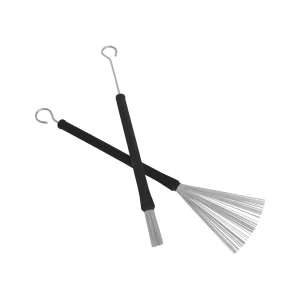
Brushes – Brushes are a type of percussion tool commonly used by drummers, consisting of a bundle of thin wires or plastic bristles attached to a handle. They are primarily used to create a softer, more subtle sound on drums and cymbals compared to traditional drumsticks. Brushes are particularly favoured in jazz, blues, and acoustic music for their ability to produce smooth, sweeping, and swishing sounds, which add texture and nuance to a performance. The wire brushes can be swept across drumheads, creating a gentle “sizzle” effect, while plastic brushes offer a slightly brighter sound with more durability. Brushes allow drummers to play with a lighter touch, making them ideal for quieter settings or intricate, delicate rhythms where a softer sound is desired.
Beaters – Beaters are percussion tools used to strike various instruments, such as drums, mallet instruments (like marimbas or vibraphones), or bass drums. They typically consist of a handle with a head made from materials like rubber, felt, wood, or plastic, each providing different tonal qualities. Beaters with softer heads produce a mellow, less aggressive sound, while those with harder heads create a sharper, more pronounced tone. The length and weight of the handle can also affect the playability and sound produced, with longer handles offering greater leverage and control. Used in a variety of musical genres and settings, beaters are essential for achieving the desired dynamics and articulation, whether it’s for a deep thud on a bass drum or a delicate touch on a vibraphone.
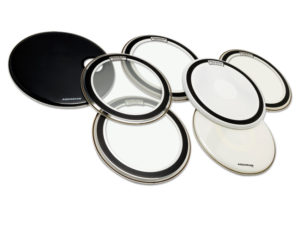
Drumheads – Drumheads are the stretched membrane that covers the playing surface of a drum, producing sound when struck. Made from materials like calfskin, synthetic polymers, or Mylar, drumheads come in various thicknesses, coatings, and textures, each affecting the tone and resonance of the drum. A thinner drumhead typically produces a higher-pitched, brighter sound, while thicker drumheads offer a deeper, more focused tone with greater durability. They are available in different types, such as single-ply or double-ply, with each offering unique tonal characteristics and playing responses. Drumheads are essential not only for the sound of the drum but also for the way a drummer interacts with their instrument. The tension of the drumhead, which can be adjusted using tuning lugs, influences the pitch, tone, and sustain, allowing for a wide range of expressive possibilities in percussion performance.
Conclusion to Percussion Instruments
Percussion instruments form the heartbeat of music, bringing rhythm, energy, and depth to every genre across the globe. From the resonant boom of the timpani to the crisp chime of the glockenspiel, each instrument tells its own story and offers a unique voice in the orchestra of sound. Whether you’re a seasoned musician or a curious beginner, exploring the world of percussion is a rewarding journey that opens the door to diverse cultures, sounds, and styles. So, pick up those mallets, tap that drumhead, and let the rhythm guide you — the world of percussion is waiting.
